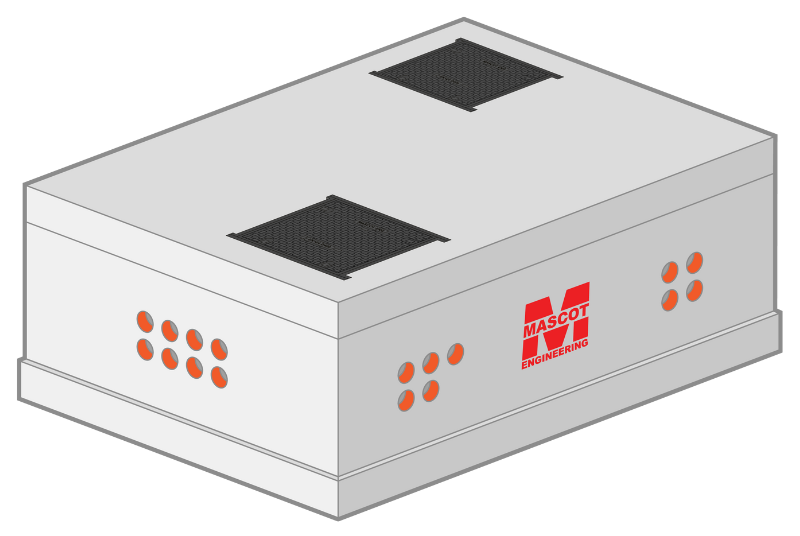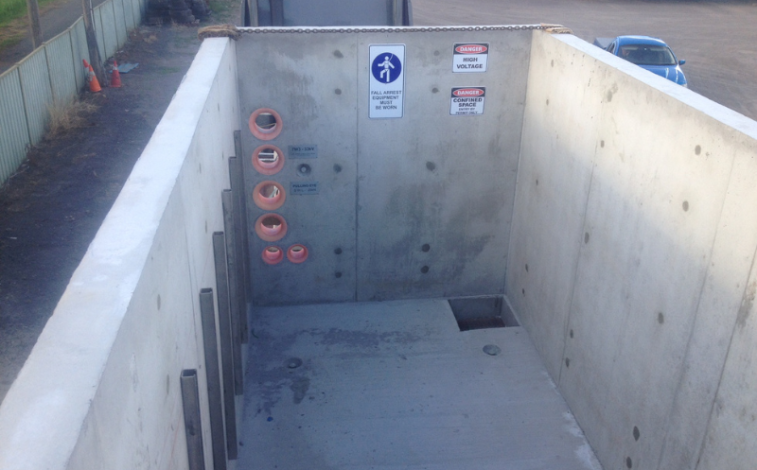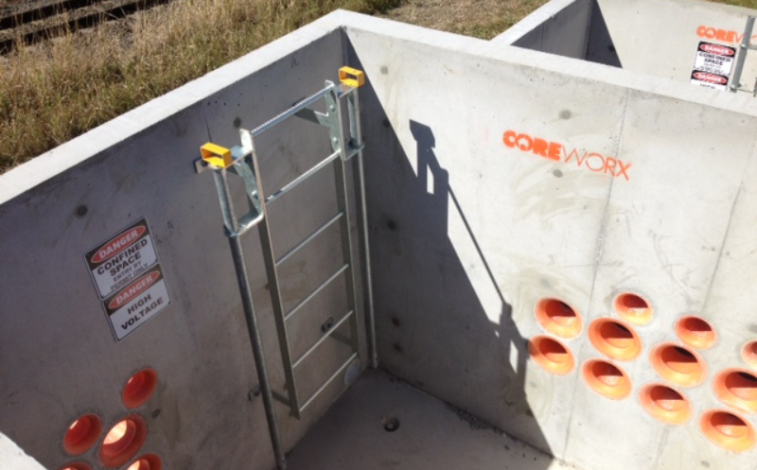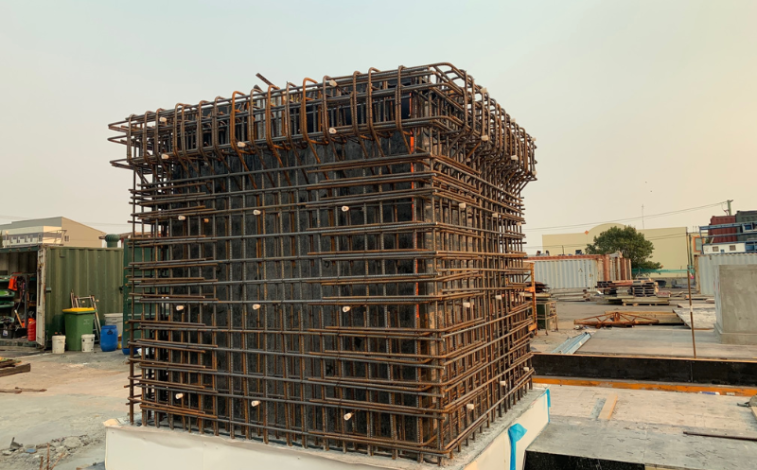HV Cable Pits

The pressure placed on Australia’s energy infrastructure is growing annually and we understand that the precast pit structure is a critical element in delivering power upgrades to suburbs, streets and towns.
Our experience and understanding of the Energy sector allows us to assist in the design and engineering to develop specific HV Cable Pits and covers for your project, allowing for client specification, site conditions and cable jointing and turning requirements.
Generally as narrow as 1000mm wide, 6000mm long and with a depth of 1200mm to 2000mm, Precast HV Cable Pits can be manufactured in any size with the deepest we’ve delivered to date being 3000mm.
Given our flexible custom production process, we can include any number of fixtures and fittings in the product during manufacture which saves our customers time installing them later on site.
Our operations team can review your drawing with a view of reducing lifting loads by building the structure in increments with key joints for the separate precast structures. We can also assist with nominating the correct access cover system to suit the application with our large range of single access covers, trench access covers and multipart access covers.
Common fittings we can include:
- Earthing continuity requirements to network or client specification including earth tags
- Cast in cable pulling eyes for cable hauling
- Cast in vertical unistrut brackets for cable support
- Cast in bell mouths or slip couplings for connection of incoming/outgoing conduits (foam wall or solid wall)
- Step irons, fixed ladders and retractable ladders to AS1657
- Drainage sump in the base or side walls. Recessed pits to allow for a submersible pump also available.
- Depth reading signs for deep pits
- Cast in access cover (infill, solid top or paver infill) to project specification and load rating.
Factors that are considered in design.
- Traffic load classification which is typically Class B, Class D, Class E and Class G (for Rail, Ports and Airports) to AS3996:2019 Australian Standard for Access Covers.
- Location of the pit… ensuring any possible water table, or high sulphate soils are addressed in the design as well as the depth of the pit which is retaining a higher soil pressure than usual and the overall design requirements set by the client.
- Design durability / design life requirements, concrete specification / strength and earth retaining structures standards.



